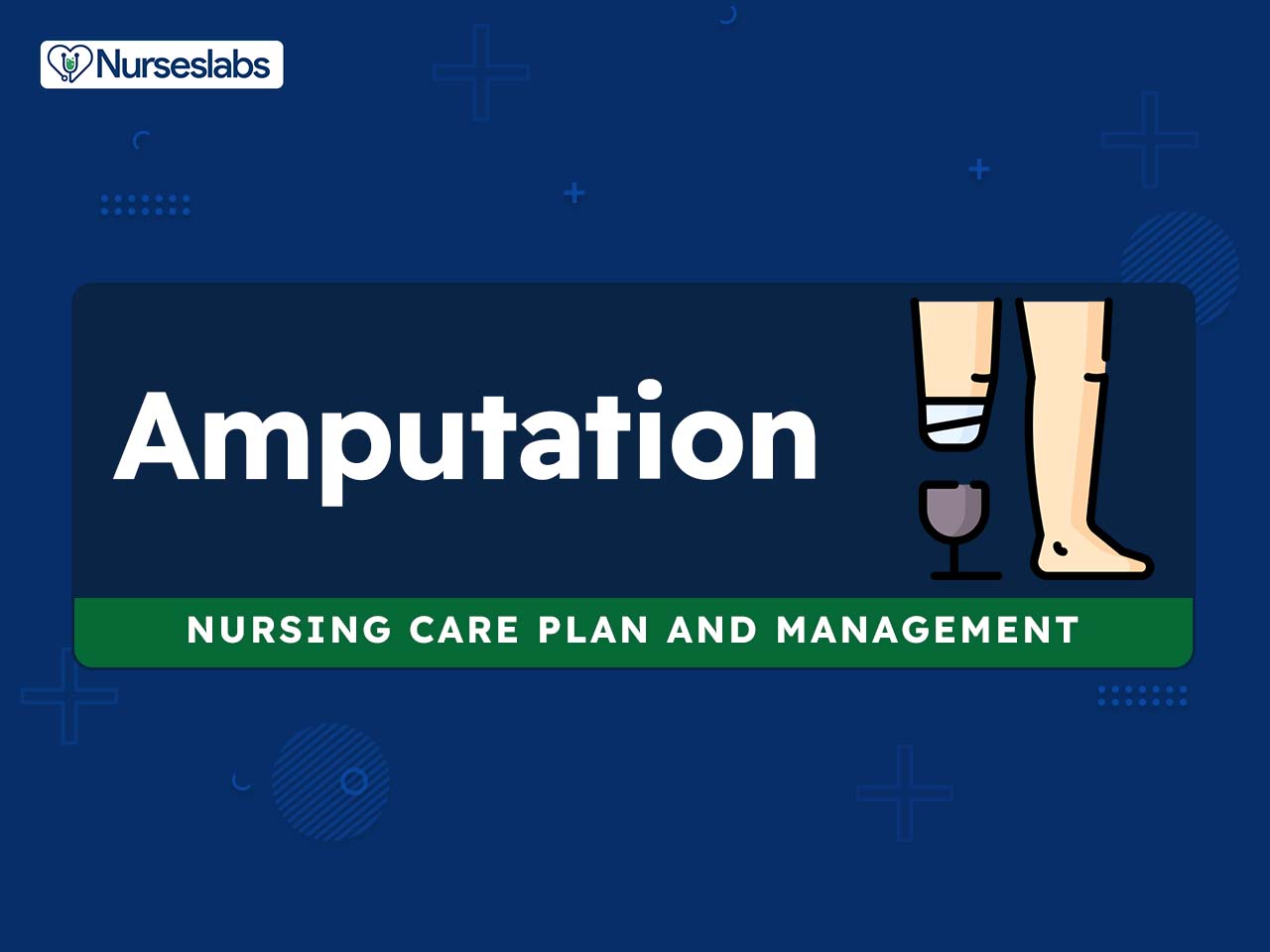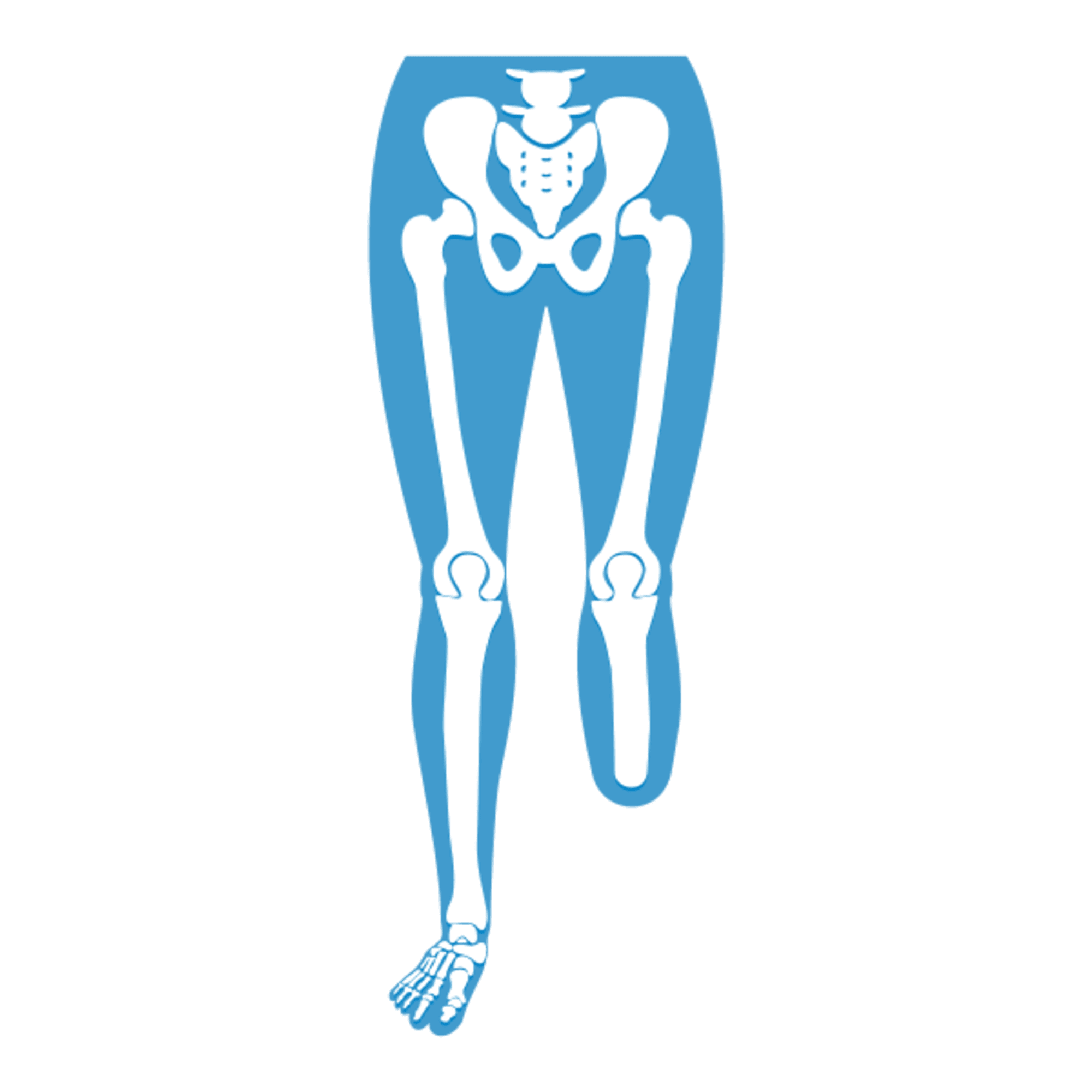
Nursing Care Plan for Amputation Nursing care plan, Nursing care, Care plans
Overview Amputation Loss of limb Patient centered care Nursing Points General Reasons for amputation Disease Diabetes->poor circulation, wounds PVD or arterial disorders->lack of blood/oxygen to tissues, wounds Injury Tumor Severe infection->osteomyelitis Amputation locations Leg Above knee Below knee Foot

Nursing Process The Patient Undergoing an Amputation
Amputation is the surgical removal of all or part of a limb due to a chronic condition or catastrophic injury. Medical advances in preventive approaches have resulted in a drop in the overall rate of amputations in the United States. Amputations due to chronic diseases like diabetes, on the other hand, have stayed constant or even increased.

Amputation Nursing Osmosis Video Library
Situational Low Self Esteem Nursing Care Plan 1. Amputation. Nursing Diagnosis: Situational Low Self-Esteem related to the loss of a part of the body or a shift in functional capacity secondary to amputation as evidenced by anticipated lifestyle adjustments, fear of criticism, unpleasant sentiments about the body, an emphasis on past strength.

4 Amputation Nursing Care Plans Nurseslabs
A nursing diagnosis is a clinical judgment concerning a human response to health conditions/life processes, or a vulnerability to that response, by an individual, family, group, or community.

(PDF) SelfEficacy of Patients with Lower Limb Amputation Nursing Guidelines
Nursing Interventions and Actions. Therapeutic interventions and nursing actions for clients with impaired skin integrity include: 1. Skin and Wound Assessment. Based on observed signs, symptoms, and/or results of diagnostic tests, a medical diagnosis can be made, which guides the treatment strategy.

In general, amputation of limbs is the result of trauma, peripheral vascular disease, tumors
1. Assessing Mobility Status and the Need for Assistance 2. Safe Client Handling 3. Providing a safe environment for the client 4. Proper Use of Assistive Devices 5. Range of Motion Exercises and Physical Therapy 6. Client Positioning, Moving, and Transferring 7. Client and Caregiver Education to Prevent Falls and Injuries

Below Knee Amputation An Overview of Prosthetic Care
A multidisciplinary approach which includes surgical technique, regional analgesia, pharmacological agents, physical therapy and psychotherapy are all key components in the peri-operative care of an amputee that can have a strong impact in decreasing the risk of PLP.

amputations nursing care Nursing care, Wound care nursing, Medical surgical nursing
This free nursing care plan diagnosis, and interventions for the following conditions: Disturbed Body Image, Residual Limb, Amputation, and Amputee What are nursing care plans? How do you develop a nursing care plan? What nursing care plan book do you recommend helping you develop a nursing care plan?

First Aid for Traumatic Amputation
Caring for patients with lower limb amputation | Nursing Times. Abstract In 2014 a National Confidential Enquiry into Patient Outcome and Death report examined the care of people requiring lower limb amputation as a.

Houston Amputation Injury Lawyers Armstrong Lee & Baker LLP
NURSING DIAGNOSIS: Infection, risk for Risk factors may include Inadequate primary defenses (broken skin, traumatized tissue) Invasive procedures; environmental exposure Chronic disease, altered nutritional status [Not applicable; presence of signs and symptoms establishes an

4 Amputation Nursing Care Plans • Nurseslabs Nursing Care Plan, Nursing Diagnosis, Vascular
Nursing Diagnosis: Impaired Physical Mobility Causes of Related Factors: Loss of a limb (especially a lower extremity); pain/discomfort; impairment of perception (altered sense of balance). Possibly evidenced by the: Reluctance to initiate motion Coordination deficits; less muscle strength, control, and mass Defining Characteristics

In general, amputation of limbs is the result of trauma, peripheral vascular disease, tumors
Evaluation Conclusion FAQs Related posts: Introduction A nursing care plan for amputations focuses on helping the patient through the life-altering event of having a limb removed. This plan includes holistic assessment and evaluation, nursing diagnosis and interventions, outcome statements and rationales, and patient evaluation and education.

nursing amputation Google Search Rehab Nursing, Nursing Study Tips, Nursing Cheat, Nursing
Richard L. Pullen, Jr., is professor of nursing and assistant director of the ADN program at Amarillo College in Amarillo, Tex, and a member of the Nursing2010 editorial board. A patient is scheduled for a below-the-knee amputation. What postoperative nursing care priorities should I prepare for?—C.H., W.VA.

4 Amputation Nursing Care Plans Nurseslabs Peripheral Vascular Disease (PVD/PAD) Nursing
Above-the-knee amputations (AKA) involve removing the leg from the body by cutting through both the thigh tissue and femoral bone. This procedure may be necessary for a wide variety of reasons, such as trauma, infection, tumor, and vascular compromise.

About Leg Amputation.
Overview Concept maps Many types, variations, layouts Primary diagnosis Typically in center of map Connects to Contributing factors Medications Labwork Patient education Nursing diagnoses Interventions Evaluations Nursing Points General Nursing diagnosis Impaired physical mobility Encourage patient to perform prescribed exercises

Amputation and 4 Amputation Nursing Care Plans and Nursing Diagnosis My Nursing Papers
2 Case Type / Diagnosis: Practice Pattern: 4J: Impaired Gait, Locomotion, and Balance and Impaired Motor Function Secondary to Lower Extremity Amputation. Other Practice Patterns may be applicable as well. ICD 9 Codes: 84.1, 84.3, 84.13, 84.14, 84.15, 84.16, 84.17